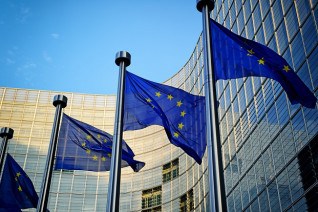The British Metals Recycling Association (BMRA) has welcomed publication last month (August 2018) of the BAT (best available technique) Conclusions for the Waste Treatment BREF of the Industrial Emissions Directive (IED) in the Official Journal of the European Union. (see below for general information and video about the BAT)
The asociation said that “this brings to a close – albeit temporarily – a time-consuming piece of work for the Association, EuRIC and other national associations.”

The BREF agreement will have an impact across Europe
Consistent lobbying by these trade bodies is seen as helping to ensure the impact of the IED was significantly reduced for members.
Risk-based
Howard Bluck, BMRA’s technical director represented the BMRA and EuRIC, as well as the UK delegation at Technical Working Group (TWG) meetings in Brussels and Seville. He commented: “Since 2010 BMRA has worked hard to ensure the IED took a risk-based approach to our sector. An early success was to limit the scope of the Directive to the more-complex processes of metal shredding and fridge shredding – the Commission’s original intention was to capture all large (>75t per day) metal recycling facilities.
“Throughout the last four years of negotiations, there were lots of proposals from TWG members that could have introduced serious negative impacts on metal recycling businesses. Fortunately, the sector was able to counter many of these proposals by demonstrating – through dedicated research projects (such at the BMRA’s BREF-style report from 2013) and the provision of real-world monitoring data – that well-managed metal shredders present a low risk to the environment.”
Monitoring frequencies
“We were also successful in avoiding mandatory pre-shredding of scrap metal to reduce the risk of deflagrations”
Howard Bluck
BMRA technical director
Mr Bluck continued: “As a consequence, we were able to reduce the monitoring frequencies some emissions to water from ‘weekly’ to ‘monthly’ or removed altogether. We were also successful in avoiding mandatory pre-shredding of scrap metal to reduce the risk of deflagrations, and instead demonstrated that effective deflagration management systems and the use of pressure relief systems can control this often-contentious issue. This alone could save companies in excess of £1million.”
BMRA said that it is currently working with EuRIC to undertake a comparative assessment of the published BAT conclusions against those presented in the first draft (or proposed during the review process). We will also attempt to quantify the costs with complying with the BAT Conclusions (including any avoided costs) and make these data available exclusively to BMRA metal shredder and fridge shredder members. The current BAT conclusions must be implemented by August 2022 and are expected to remain in effect for the next eight years or so.
GENERAL INFORMATION ABOUT THE BAT
In August 2018, the European Commission commented on the topic of BAT and said: “New emissions and efficiency standards will help national authorities to lower the environmental impact of the largest waste treatment installations in the EU, dealing with both hazardous and non-hazardous waste. This represents around 4,000 installations.”
The new specifications are the result of a review of the Best Available Techniques (BAT) Reference Document (BREF) for Waste Treatment. The review’s BAT conclusions are published in the Official Journal of the EU.
The Commission noted that “Beyond their importance for the European waste treatment sector, these BAT conclusions also play an important role in achieving EU environmental and waste management policy goals.
“Waste management is an essential part of the EU’s transition to a circular economy and is based on the ‘waste hierarchy’ which sets the order of priority when shaping waste policy and managing waste at the operational level.”
Best available techniques for treating waste
And, the Commission added: “The BAT conclusions provide national authorities with the technical basis for setting permit conditions for installations.
While the main aim of these BAT conclusions is to reduce emissions from different waste treatments, other environmental issues – such as energy efficiency, resource efficiency (water consumption, reuse and recovery of materials), prevention of accidents, noise and odour, management of residues – are also covered.
The document contains 53 individual BAT conclusions. Of these, 24 apply to the sector as a whole and 29 apply to the most common waste treatments, including mechanical, biological and physico-chemical treatments and treatment of water-based liquid waste.
They also apply to temporary waste storage and independent waste water treatment plants whose main share of treated effluent originates in waste treatment installations.
The post Metals sector welcomes EU’s BAT conclusions appeared first on letsrecycle.com.
Source: letsrecycle.com Metal



